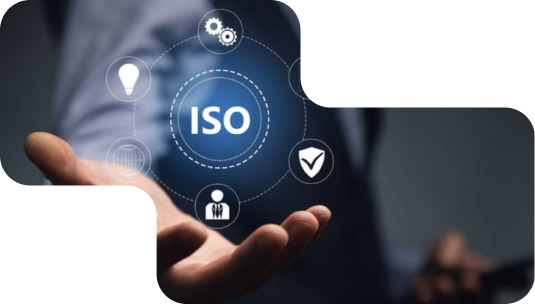ISO 27018: Safeguarding Privacy in the Cloud In an age where personal data is increasingly stored and processed in cloud environments, ensuring the privacy and security of this data is critical. ISO 27018 is the internationally recognized standard designed specifically for protecting personally identifiable information (PII) in cloud services. SecureITLab is your trusted partner in achieving ISO 27018 compliance and securing sensitive data in the cloud.

By aligning with ISO 27018, organizations can mitigate the risk of data breaches and unauthorized access to sensitive information.
Adhering to ISO 27018 demonstrates an organization’s commitment to data privacy, earning the trust of customers, partners, and other stakeholders.
ISO 27018 instills confidence in cloud service users by setting clear standards for the protection of personal data. It ensures that PII is handled with care, safeguarding individual privacy.
In an era of stringent data protection regulations, ISO 27018 helps organizations meet the requirements of various data privacy laws, such as GDPR and HIPAA, ensuring legal compliance.
The transition from ISO 27001:2013 to ISO 27001:2022 is a critical step to ensure your information security practices remain up to date. ISO standards evolve to address emerging threats and best practices in the industry. Here’s an overview of the transition:

Our team brings extensive experience in cloud sexurity and ISO 27018 compliance, enabling us to provide insights specific to protecting PII in the cloud.

We are committed to your organization's data privacy journey. Our experts provide continuous support to help you maintain and continually improve your cloud data privacy practices.

We assist in developing in necessary documentation and practical implementation of ISO 27017 requirements, ensuring a smooth path to compliance.

SecureITLab offers tailored solutions that align with your organization', unique cloud security needs, ensuring that your journey towards ISO 27018 compliance is efficient and effective.

Cybersecurity Maturity Assessment

Assess the cyber security posture

Assess the cyber security posture

Assess the cyber security posture

Assess the cyber security posture

Assess the cyber security posture

Assess the cyber security posture

Assess the cyber security posture

Assess the cyber security posture

Assess the cyber security posture

Assess the cyber security posture

Assess the cyber security posture

Assess the cyber security posture of your organization

Assess the cyber security posture of your organization

Assess the cyber security posture of your organization

Assess the cyber security posture of your organization

Assess the cyber security posture of your organization

Assess the cyber security posture of your organization

Assess the cyber security posture of your organization

Assess the cyber security posture of your organization

Assess the cyber security posture of your organization

Assess the cyber security posture of your organization

Assess the cyber security posture of your organization

Assess the cyber security posture of your organization

Assess the cyber security posture of your organization

Information security, cybersecurity and privacy protection — Information security management systems

Security techniques — Extension to ISO/IEC 27001 and ISO/IEC 27002 for privacy information management

Security and resilience — Business continuity management systems

Information technology — Security techniques — Code of practice for information security controls based on ISO/IEC 27002 for cloud services

Information technology — Security techniques — Code of practice for protection of personally identifiable information (PII) in public clouds acting as PII processors

Information technology — Service management Part 1: Service management system requirements

Information technology — Artificial intelligence — Management system

Assess the cyber security posture of your organization

Assess the cyber security posture of your organization

Assess the cyber security posture of your organization

Assess the cyber security posture of your organization

Design and implement a data governance framework aligned with business goals and regulatory requirements

Define and assign data stewardship roles for your organization.

Ensure the accuracy, consistency, and completeness of data

Establish consistent, accurate, and controlled master data

Organize data for easy access and use

Ensure compliance with governance policies and regulations

Manage data from creation to disposal

Ensuring organizational alignment and readiness for governance practices

Evaluate data privacy practices against legal and regulatory frameworks

Draft and implement privacy policies that comply with regulations

Map out and document data flows across the organization

Manage requests related to data subject rights

Embed privacy considerations into data management processes

Ensure that thirdparty vendors adhere to data privacy standards

Manage data breaches and minimize the risk of future incidents

Ensure continuous compliance with privacy regulations

Raise awareness and ensure employees understand data privacy responsibilities

Assess the cyber security posture

Assess the cyber security posture

Assess the cyber security posture

Assess the cyber security posture of your organization
